We recently vacationed in Fredericksburg, Texas and knew we couldn’t miss the notorious National Museum of the Pacific War, the only museum in the United States specifically dedicated towards preserving the history of the soldiers serving in the Pacific Theater during World War II.
The only problem? Our kids range in age from 2-15. My husband and I really wanted to see this museum, but we wondered, is the National Museum of the Pacific War a good fit for families? This list of questions and details will provide a definitive guide for families headed to Fredericksburg who also want to visit this incredible museum. Short answer? Yes, it is doable with kids!
The following is a review of the National Museum of the Pacific War in Fredericksburg, Texas. My family and I received complimentary admission in exchange for my opinion of the museum. All opinions are my own.
Why Visit the National Museum of the Pacific War?
The National Museum of the Pacific War is a must-see museum for history buffs! Honestly, it’s an impactful and deeply moving museum for any American to understand the heroism and sacrifice of servicemen and women in World War II. It also powerfully demonstrates the industrial growth of America throughout the war.
Having just studied WWII this past year in our homeschool, I was excited for my older children to see the artifacts and memorabilia on display here. Nothing makes history come alive more than witnessing history up-close through original artifacts.
READ: 7 Ways to Get Kids Hooked on History
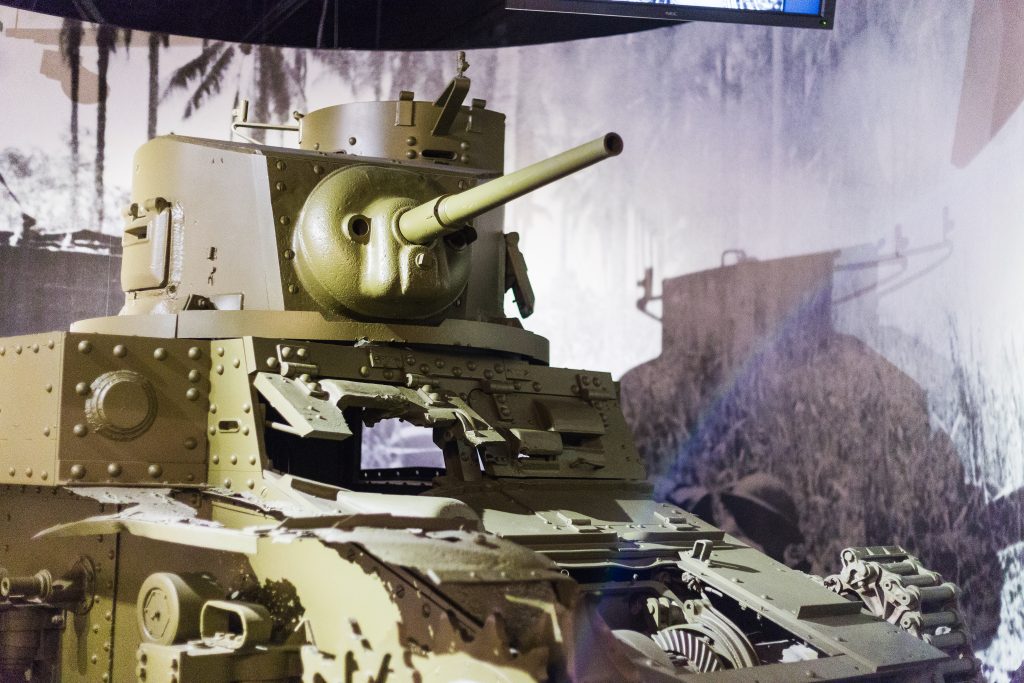
What is there to see at the National Museum of the Pacific War?
The Museum is set up as a progression of exhibits and extraordinary artifacts including uniforms, helmets, letters home to families, and other personal effects of the heroes who served. In addition, there are large vintage airplanes, tanks, ships, and military equipment. These are punctuated by state-of-the-art audio-visual presentations, large murals, and detailed signs explaining the various artifacts.
The physical structure of the museum guides visitors through a sequential progression of World War II beginning with the conflict between Japan and China. Visitors wind their way through the years beginning with the pre-war era and continuing into the 1940s throughout the duration of the war.
Additionally, the museum offers special exhibits and events open on certain days. There is so much to see and learn at this museum! It is extensive, but there were some areas that ended up being the most meaningful and memorable for us:
READ: Fredericksburg, TX Family Friendly 4-Day Itinerary
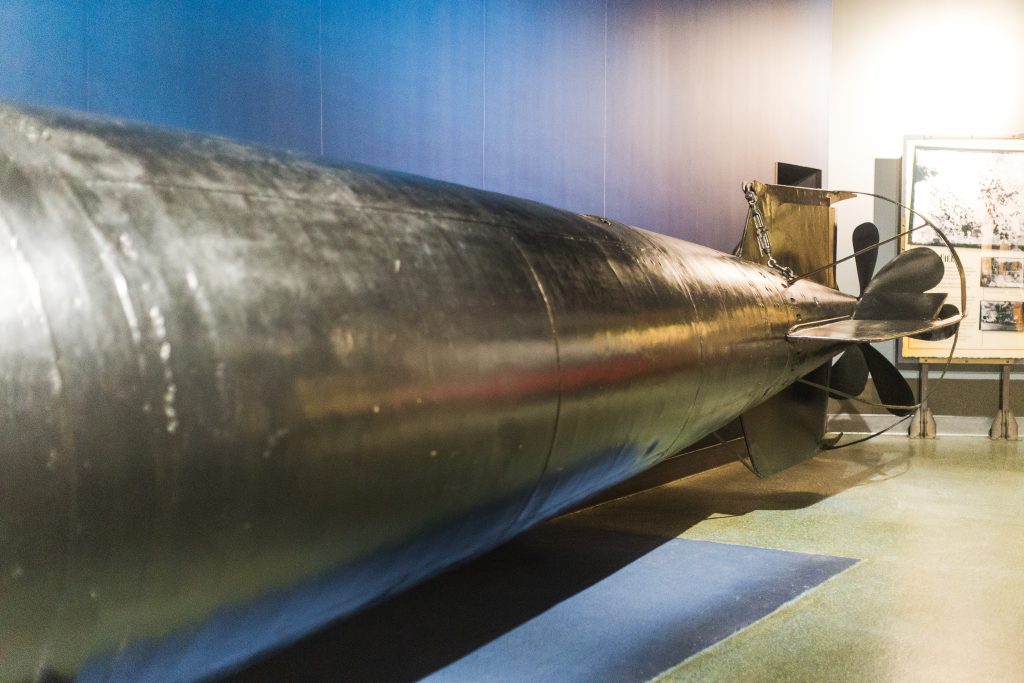
Pearl Harbor Exhibit
A deeply moving exhibit displaying a Japanese midget submarine HA-19. This torpedo-carrying submarine was one of five that attacked Peal Harbor on the morning on December 7, 1941. This exhibit also included a hatch from the USS Arizona, articles of clothing, models of the Navy vessels in Pearl Harbor, and many other artifacts.
The Doolittle Raid Exhibit
Not being a history buff, I had never heard of the Doolittle Raid and found this exhibit fascinating. The cornerstone of the exhibit was the B-25 Mitchell Bomber, an army airplane launched from Navy aircraft carriers with the aim to attack the Japanese home islands.
After Pearl Harbor, the Americans desired to boost American morale as well as demoralize the Japanese by showing they could reach major cities such as Tokyo and others. Sixteen B-25s completed the mission on April 1, 1942. The story of the heroes involved was intriguing and memorable.
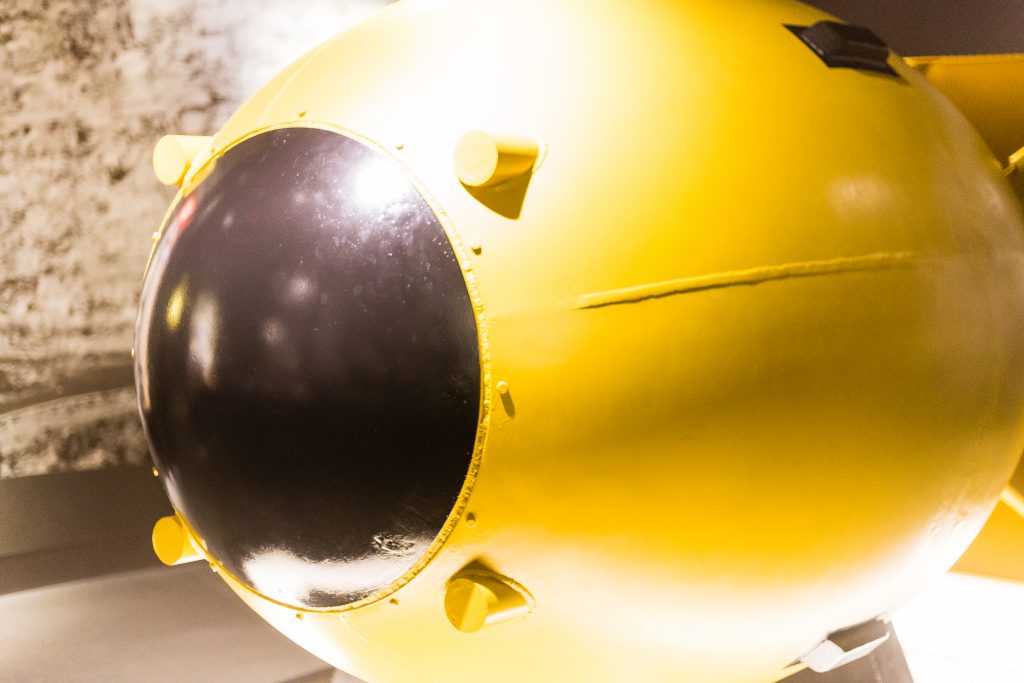
Okinawa and the Atomic Bomb Exhibit
The battle in Okinawa offered the United States a glimpse of what the battle would be like if the Americans were to invade mainland Japan. With a dim prospect for the future, by 1945, President Truman was considering the use of the atomic bomb to end the war. Perhaps the most significant artifact in this exhibit is the bright yellow, actual atomic bomb casing, the “terrible new weapon”. There were seven of these manufactured during the war and ready for use if necessary. Standing taller than the kids, the huge bomb casing, “Fat Man”, with its potential consequences made a deep impact on the whole family.
Additional Galleries
In addition to the main campus of the Museum, there are several additional galleries housed in separate buildings or outdoors nearby. If you choose to visit all these components, you will definitely need to set aside additional time.
The Admiral Nimitz Gallery
This part of the museum, housed in the newly renovated Nimitz Hotel, chronicles the life, career, and contributions of Fleet Admiral Chester W. Nimitz. He was born and raised in Fredericksburg then went on to serve as Commander in Chief of the Pacific Ocean Areas during World War II, making Fredericksburg a perfect place to build a museum in his honor.
READ: 5 Reasons to Teach History Not Social Studies
The Japanese Garden of Peace
This beautiful space was a gift from the people of Japan to the people of the United States in 1976. Symbolizing the friendship today between the two nations, it features the traditional Japanese fish pond, raked stones as well as a display of Admiral Heihachiro Togo’s study in Japan.
The Pacific Combat Zone
Open only on the weekends, this building just a short walk away from the main campus of the museum houses a scale map of the Asiatic-Pacific Theater, a living history battlefield, and an aviation exhibit. Special events offer demonstrations and live reenactments here of World War II battles.

How Long Does It Take to Go Through the National Museum of the Pacific War?
The museum is vast so most visitors will want to allow at least 3-4 hours for the main George H.W. Bush Gallery. If you’re a history fan who likes to read each and every detail, you could easily spend the entire day there. They even have a VIP Two-Day Pass option to spread your visit out over two days, which is a great choice if you are interested in viewing the additional galleries available.
Personally, with our family of four children, we ended up staying for about three hours in the main part of the museum, the George H.W. Bush Gallery. It definitely felt rushed to me, and I would have liked to look at some of the exhibits in greater detail, but my toddler was ready to go!
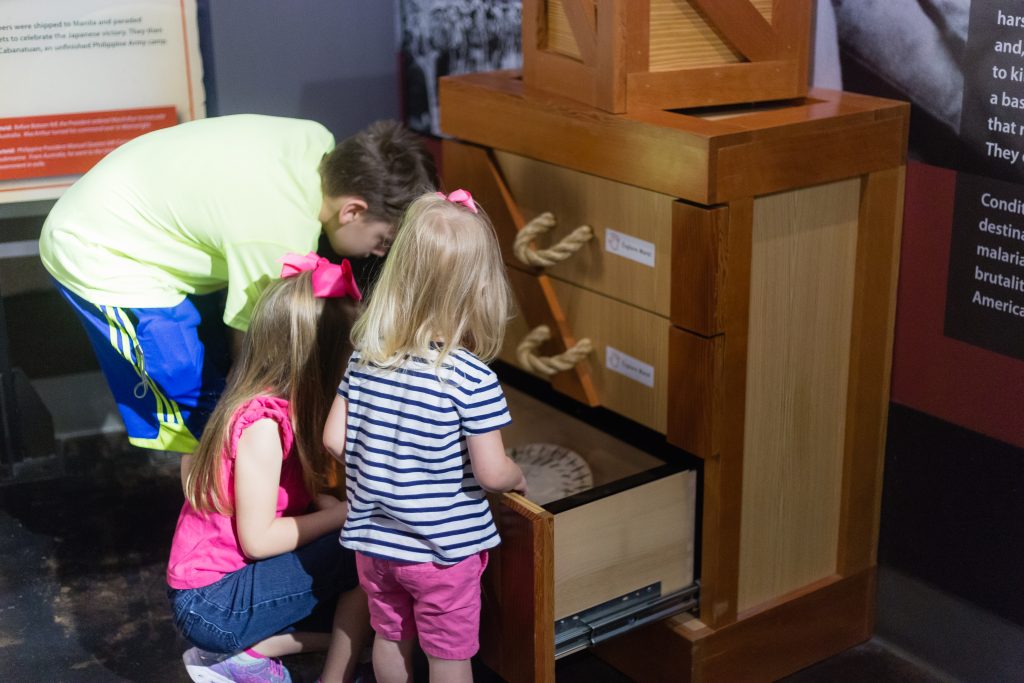
What Ages Should Visit the National Museum of the Pacific War?
While the National Museum of the Pacific War is obviously crafted for an older, adult audience, there are also interactive exhibits geared towards younger learners. Throughout the museum, there are videos using innovative media, audio, and large artifacts that draw interest of even the youngest visitors. My kids especially enjoyed peering into the submarine periscopes and seeing the large airplanes. The Museum also has several small artifacts and unique kid-friendly information tucked into interactive drawers at kid-level that children can pull out. The museum is especially meaningful for students who have studied World War II in school.
We kept our 2-year old tucked into her stroller most of the time simply to prevent her from walking in front of other visitors or trying to climb the exhibits. The National Museum of the Pacific War was very stroller friendly, but not overly interesting for little ones, as is true of most museums. It is doable with tiny kids, but much better suited for older children.
However, one kid-friendly aspect was the scavenger hunts. Occurring only on specified days, the Museum had age-specific scavenger hunts available using your own mobile device. Our oldest child joined up with her 6-year old sister and completed the Elementary scavenger hunt.
The hunt asked her to look for things such as the Korean Flag, name the colors on a certain airplane, or count how many Japanese dolls you saw. This kept her busy and engaged throughout our visit! At the end, we visited the gift store where she was delighted to receive a lanyard and a coupon for her participation.
READ: Raising Fearless Kids in a Scary World

How Do You Purchase Tickets to the Pacific War Museum?
The museum in open everyday of the week except Tuesdays, from 9am-5pm. They recommend you purchased tickets in advance, but walk-ins are allowed as space permits. For more information, check out their website.
You won’t want your family to miss this thought-provoking historical museum, the only question is how much time to allow? There are many things to see and do in Fredericksburg, Texas so check out this done-for-you four-day family-friendly Fredericksburg itinerary to make it easier to fit in all the highlights! It’s an amazing town and the perfect home for the National Museum of the Pacific War. You won’t want to miss it!
Next up: A Review of the Pioneer Museum in Fredericksburg, TX
Psst! Pin this for later!
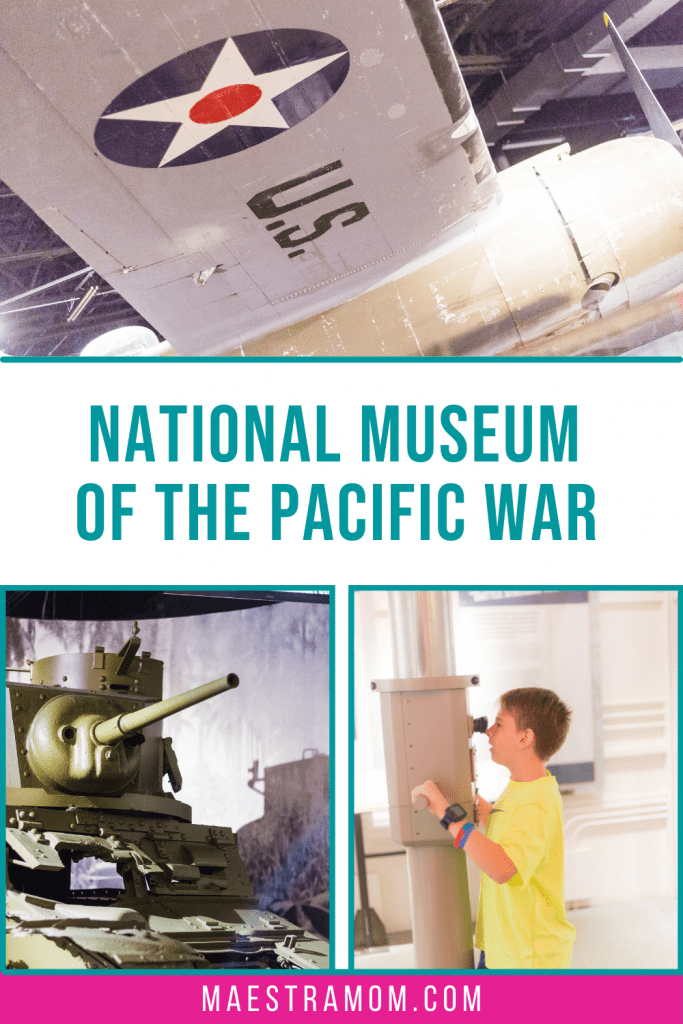


Thats cool! Kids must love looking and experiencing the museum. Great learning time
Yes, I think it’s the best way to learn history!
My father was in the navy during WWII and served in the Pacific. I had no idea this museum existed. Thank you for sharing.
Oh, wow! It would probably be so meaningful for you to visit someday! I appreciate your dad’s service.
I find scavenger hunts to be an awesome way to get kids to connect with what they are seeing! We have done a few of these at aviation museums in both Canada and the US. Kids love them, and we love being able to visit the museum.
I agree! It’s a fun way to keep the kids engaged.
Oh this is interesting. If I am ever in the area I will check the museum out.
You definitely should! It is a very memorable museum.
I would have never thought to look for a Pacific War museum in Texas. Sounds like a fascinating place.
I know, right? I was surprised by the location as well, but it makes sense as it was the birthplace of Admiral Nimitz.
My grandsons would enjoy this museum!
Absolutely!
Amazing! I know nothing about traveling all over the country, what a wonderful looking place to explore.